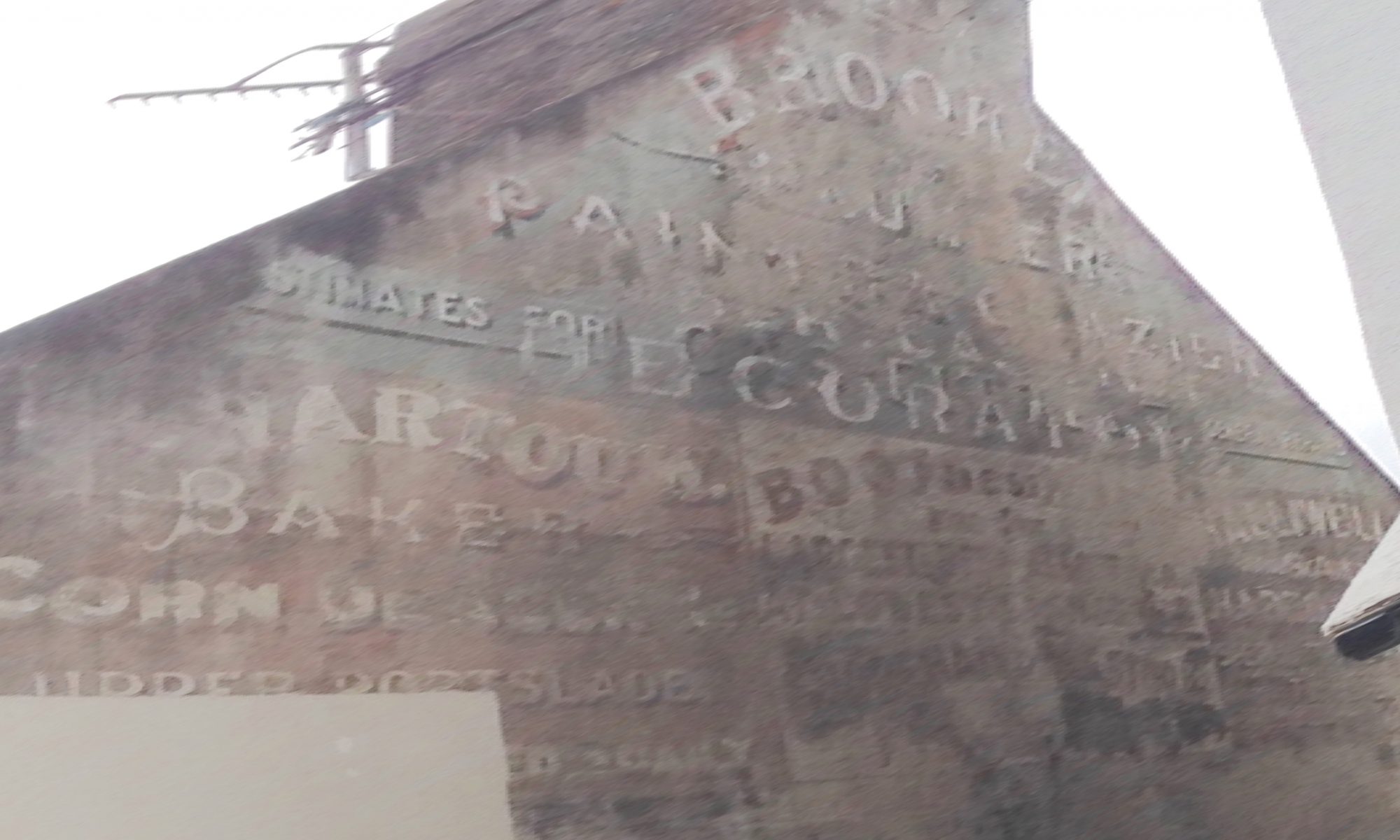19th Century Wall Advertisements in John Street
During the 19th and early 20th centuries it was common practice for the commercial areas of most towns and cities to have advertisements painted on the walls of business premises and shops, some were of a high quality, almost works of art. Over the years since most signs have disappeared through overpainting or weather erosion but some still remain. Nowadays they are more appreciated for their historic and artistic value and efforts tend to be made to preserve them. Commonly known now as ghost signs they once appeared most everywhere in Shoreham’s High Street but less so on premises in side streets such as the Beehive pub in North Street and the Burrell Arms Hotel in Brunswick Road.
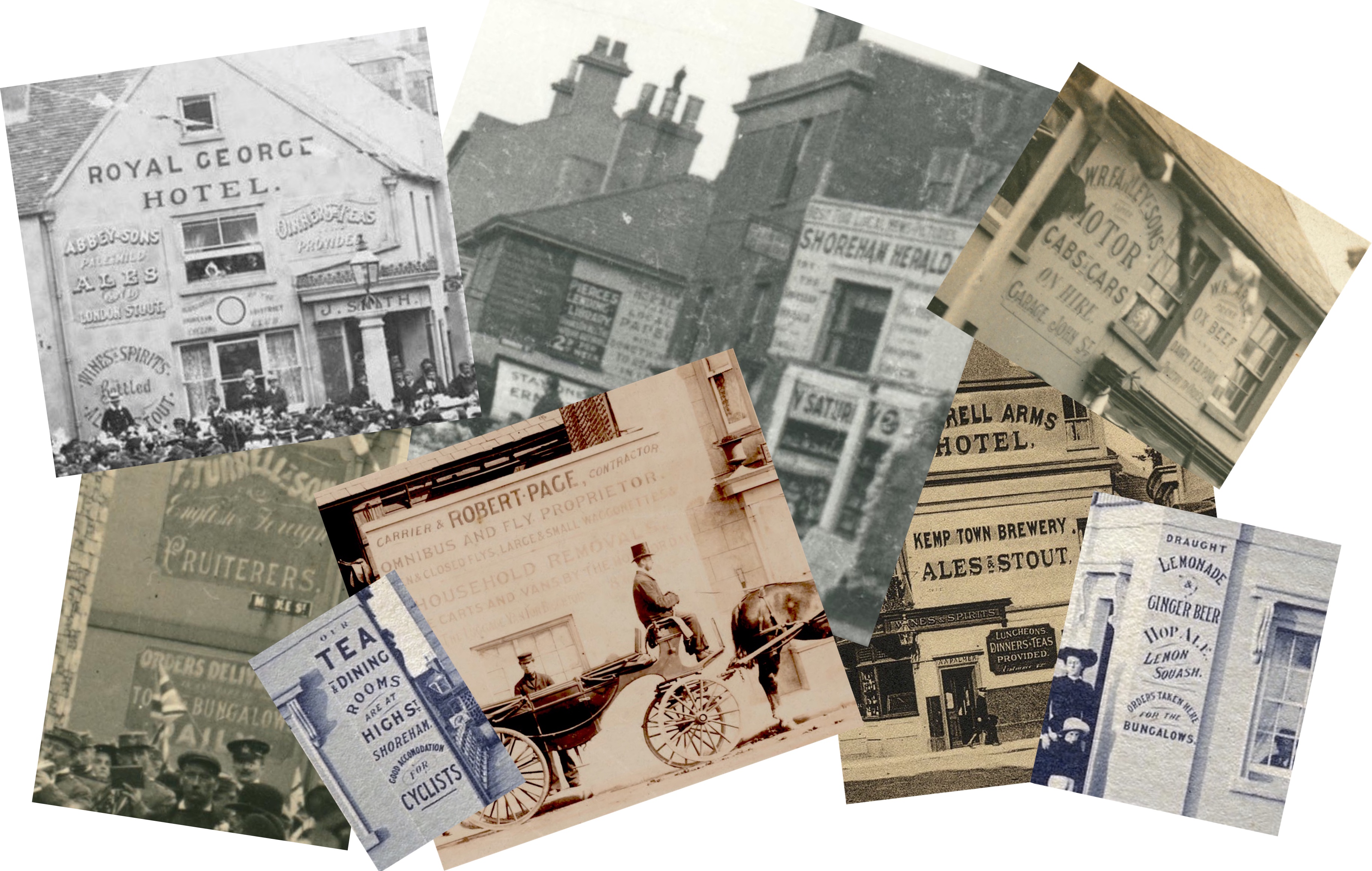
Little or nothing remains of them except for one small collection in the most unlikely of places.
The Brooker family in Church Street ran a successful business shared between the father Henry W. Brooker, master plumber, and sons George, plumber and painter; Thomas, blacksmith and John a decorator. During the 1890’s the family aquired land in the upper half of John Street near the western corner with North Street and built a small terrace of five houses there, now numbered 45 to 53.
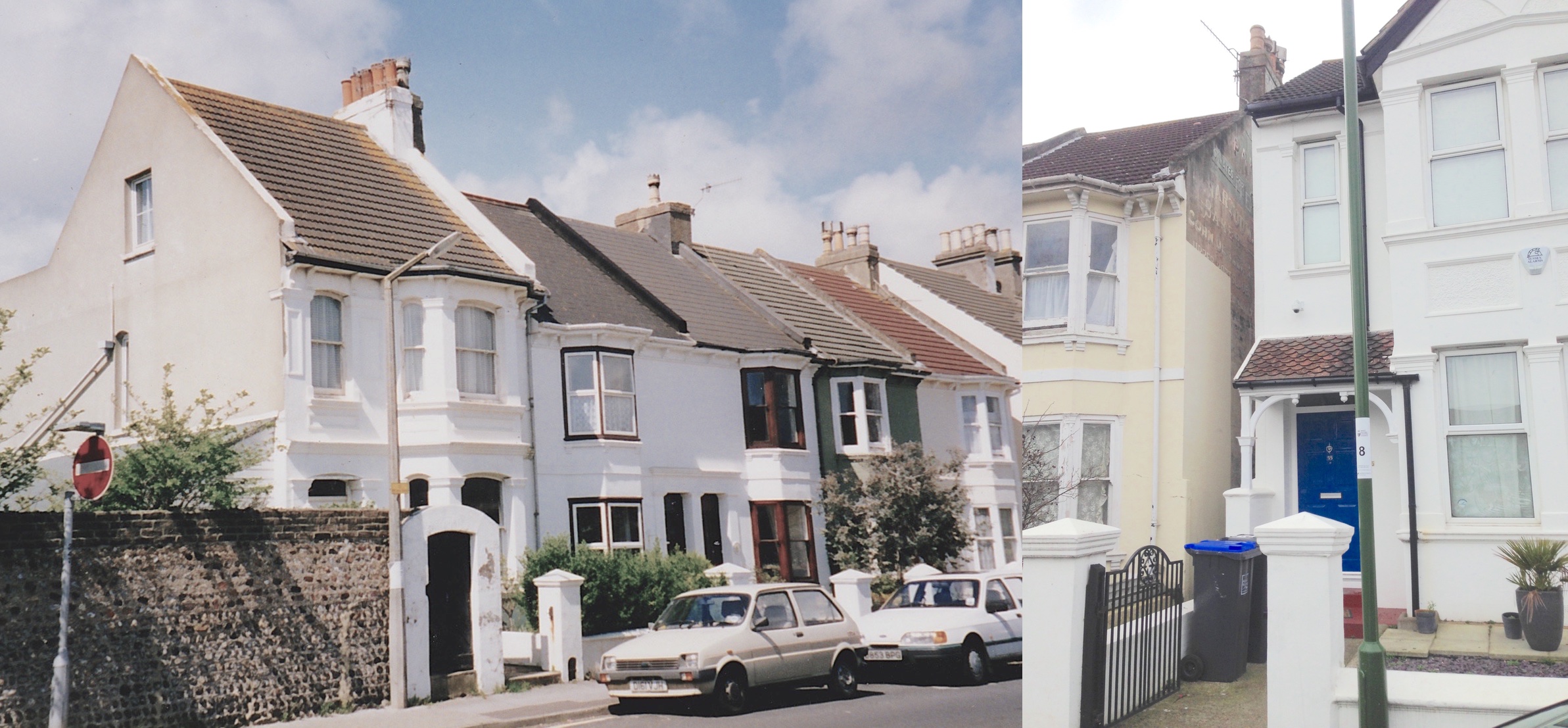
The Brighton to Worthing railway line runs close by so the enterprising Brookers painted an advertisement for their business on the side of the house closest to the line (number 53) visible to passengers in passing trains. This was followed by further adverts for other businesses that the family rented out the wall space for and doubtless they did the painting too.
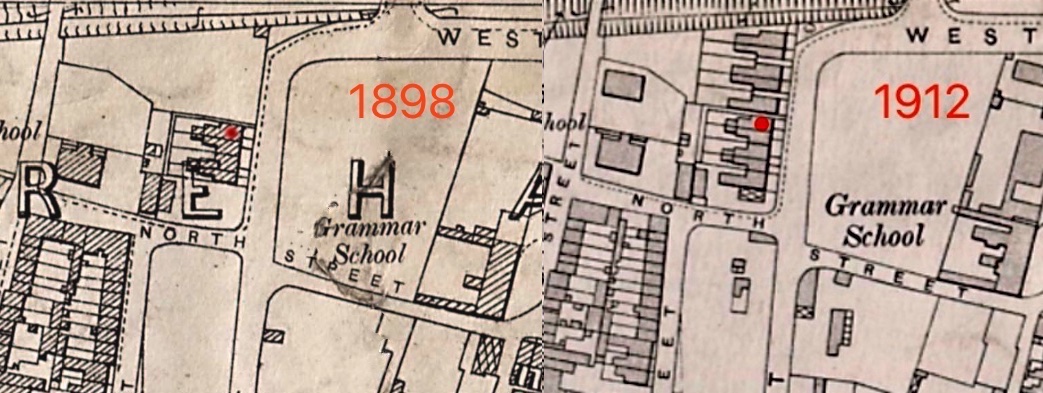
The advertising enterprise lasted for about twenty years but was eventually ended when the land closer to the railway was also developed and obscured the view of the advertisements from the trains. Some of the lettering survives and can still be made out despite weather erosion and part overpainting. The gap between the Brooker’s properties (then named St. John’s Terrace) and the later development is so narrow it is impossible to take a photo at an angle that enables a clear view of the lettering but with modern photo editing the photo of the advertisements can itself can be distorted to straighten the view.
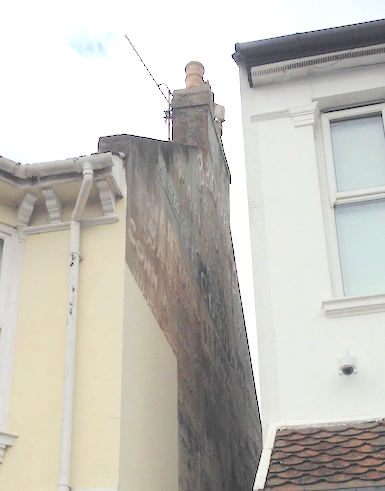
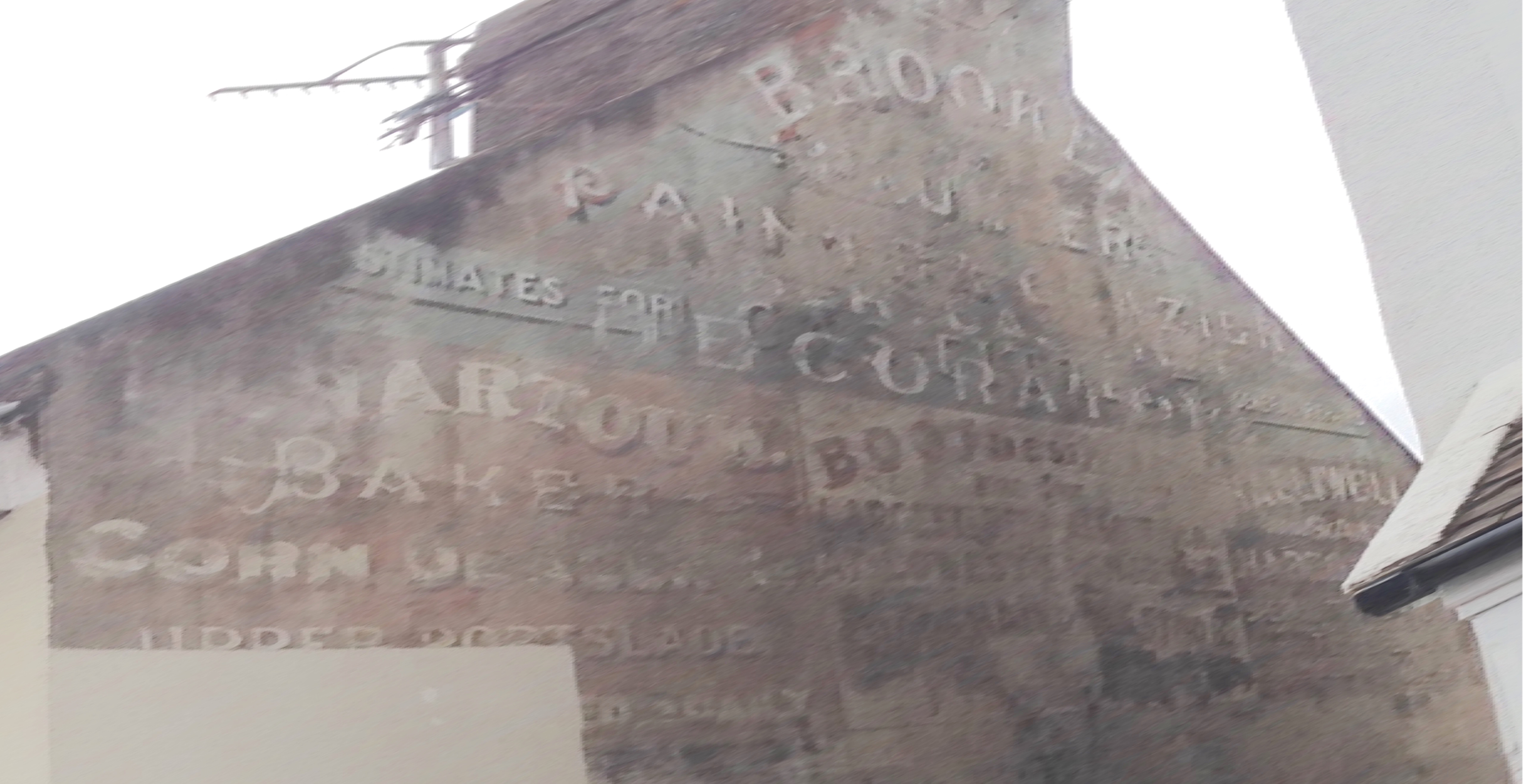
Visible signwriting details:-
Top
centre:
Brooker, plumber, painter, glazier, – estimates for – decorators – general repairs, gas fitter (the lettering ‘estimates for’ and ‘general repairs’ appear to use additional, separate signs fixed to the wall)
Below
left: – – – -wartouw – baker, corn dealer, upper Portslade, – – – – –
The 1890 directory shows a Mr. H. Zwartouw living further down in John Street. Hendrik Zwartouw was Dutch and soon after moved with his family to Portslade where they remained for many years as bakers, particularly known for their work as cake makers.
centre: Boot (on the left side of the sign followed by best for the… The collective wording appears to read Best for the largest (boot?) assortment at lowest cash prices. The penultimate line reads Shoreham Boot Stores but the last line is obliterated with black paint although what remains may be High St. – no other name with which to identify the business is visible. There were a number of bootmakers in Shoreham in 1890 but the most successful of them all was George Hedgecock for whom the directory for that year shows he had two shops, East Street and the High Street, the latter on the east side of Fred Wood’s bakery opposite the old Town Hall. George did not remain long in the High Street and concentrated his business at the larger premises in East Street which may account for the deletion of the High Street wording.
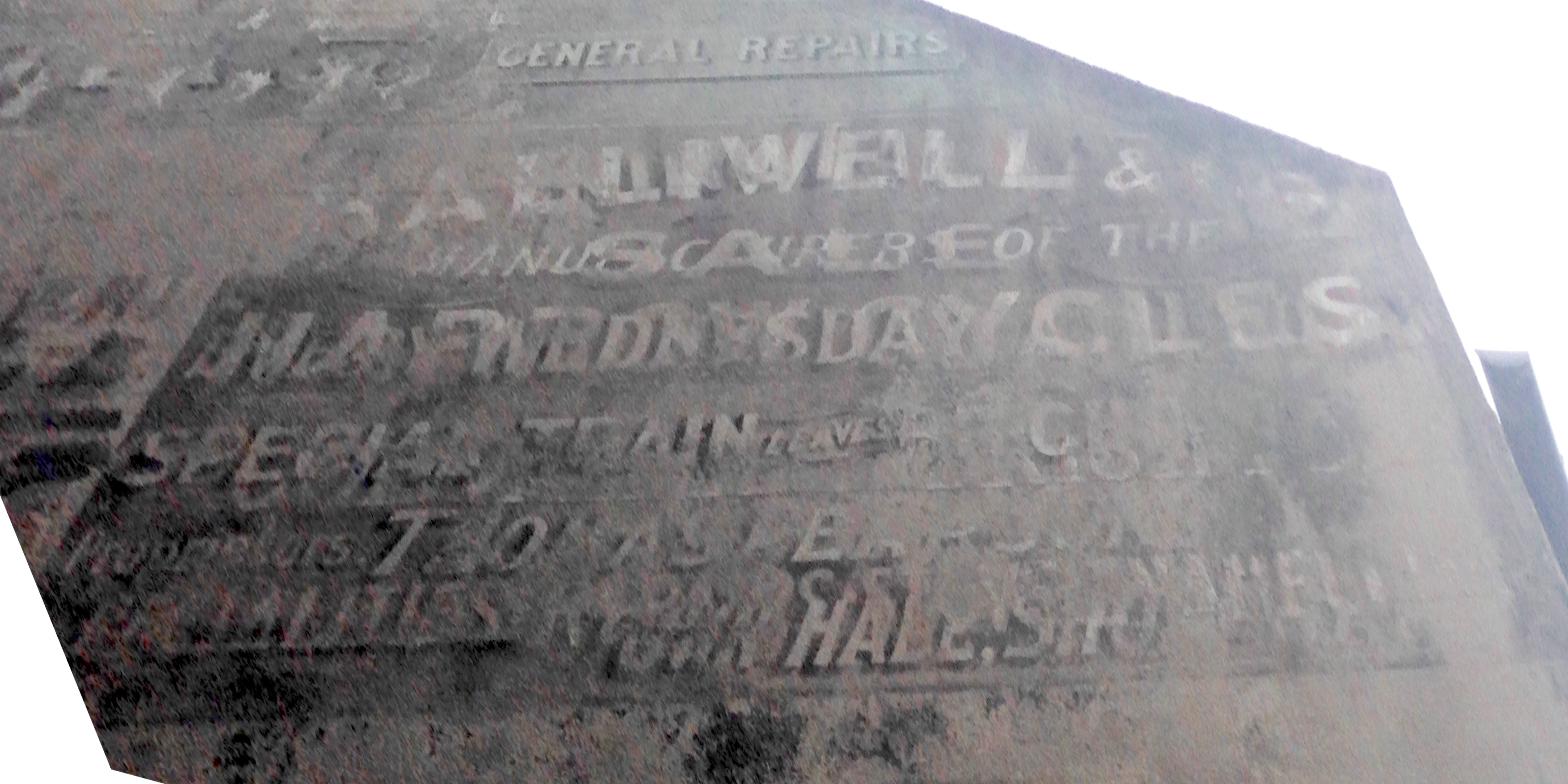
Right: Two advertisments, one with the name Halliwell that has partly overpainted on another mainly undecipherable sign or signs slightly below it. The Halliwell advert reads: Halliwell & Co manufacturers of the Harrow Cycles. Specialities repairs, stove enamelling. Halliwell were a Brighton company manufacturing the ‘Harrow’ and ‘Brighton’ bicycles.
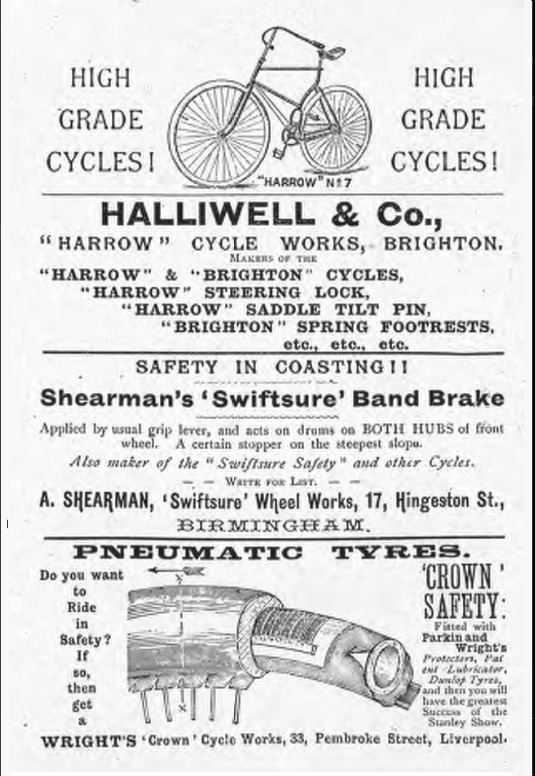
Little is discernable from the next and last advert or adverts beneath the Halliwell lettering over them but enough to suggest an intriguing indication of an unusual (for a semi-permanent wall sign) arrangement for local travel: Sale every Wednesday – Special train leaves (location undecipherable, perhaps Brighton). Proprietors Thomas Pearson, Town Hall, Shoreham. Thomas Pearson, farmer and auctioneer, is shown in the 1891 census at Erringham Villa in Buckingham Road, Shoreham but no commercial enterprise in the directories concerning travel or an association with the Town Hall.
If there were more advertisements lower down the wall they are no longer visible.
Roger Bateman
Shoreham 2017
Advertisement leaflet from The On Line Bicycle Museum
Census Returns
Street Directories
A History of Church Street 1782 – 1920 – Bateman 2008


